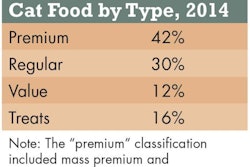Part one of a series: Petfood strategyrevisited
Justin Case, marketing director of Feed Your Pet Inc., has prepared a draft strategy paper to be discussed with Joe Zweifel, his boss and chairman of the board of the directors. The company grapevine says there is some unrest among the board about being presented a new strategy paper; some of the board members think this is a superfluous exercise because there already is a paper.
Joe: I went through your paper three times to let it sink in properly and I now understand why you were negative about the strategy paper prepared by the board. Let’s sit down and talk about what you sent me.
Justin: Funny thing, isn’t it, strategy? It’s mostly about change, whereas most people are afraid of change. And yet they work on defining strategy. Let me now take you through the document to further explain the thoughts behind the model.
Joe: Let’s do that. I wish to go into the board meeting well prepared.
Justin: Shall we start with the vision? It has become commonplace to have a vision when thinking strategy. I prefer to call it a dream. Something on the horizon that you want to reach. I deliberately did not put quantification into our vision, because it would then be confused with an objective.
Generally a vision statement comes from the owner of the company, or in case of a public company from its chairman. In our case the chairman—that’s you—has indicated it’s your dream to become the globally recognized psychological leader in the top-end petfood industry. That is a valid statement because it does indicate where you’re heading.
Oh, and by the way, I believe that quite some companies in our industry do not have a clearly formulated vision statement; and all the same they seem to be doing well. Having a formulated vision is not a condition for success, nor a guarantee. But it helps to focus.
Joe: On the surface it looks like a bold, somewhat pretentious statement, but I see where you’re heading: if you dream, dream big!
Justin: Exactly. And think of this: how can a dream be pretentious if you want to live that dream? After all, it’s your dream, not somebody else’s. Which brings me to the next step in building and formulating strategy: the mission statement, which in my point of view is nothing more or less than saying to the outside world that you’re there and what can be expected from you. Is it necessary to have a mission statement in your strategy paper? I don’t think so; but I know that others see it as the backbone of their strategy.
Joe: I find it always difficult to relate to these kind of statements. It looks as if they are there because the model prescribes so. The relevance is not altogether clear to me. And neither is how to build the team that develops the strategy.
Justin: Sometimes I do have the impression that the strategy team is built based upon seniority in the company rather than on relevant experience and value of the contribution to the process. Evidently, creative and lateral thinking are important requirements. And guard yourself against the fresh-from-university youngster who enthusiastically opens his or her laptop before a meeting starts, and then patiently waits for input. Essentially a non-contributor who should only be present to listen to what is being said, to learn from it. These youngsters start to play a role once you’re in the phase of strategic planning. But first put your feet on the table with a small group of people whose opinions and insights you value and trust to go through a phase of strategic thinking before you enter the numbers phase—or strategic planning—where the youngster with the laptop become of service to the process.
Joe: Couldn’t agree more. I sometimes hear horror stories from colleagues and friends about precisely this phenomenon. About consultants that send you the assistant who happens to have a driver’s license, but charge you as if they sent their best guru himself. Coming back to what you said before: of course there is no question that the team should be orchestrated on the basis of quality of input rather than hierarchy.
Justin: You and I need to put the strategy team—or maybe teams—together and start to plan the process. I will prepare the further input for our discussions. Expect this within around a week. Now got to rush; I have a flight to catch.
21st Pet Street, home of Change Stranamics
















